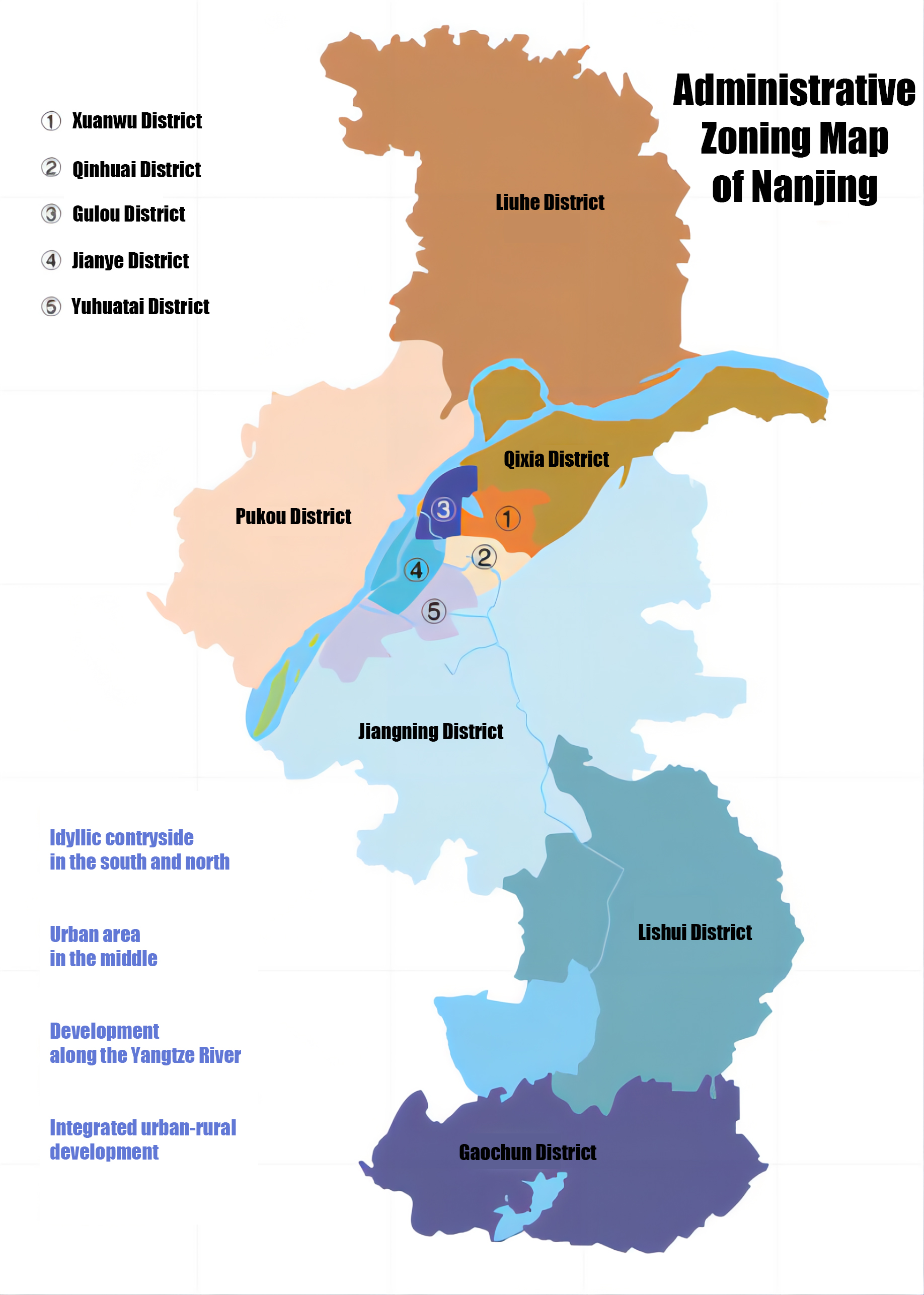
After the founding of the People’s Republic of China, there have been changes in the scope and administrative divisions of Nanjing. In June 1949, Nanjing held 13 districts, numbered from 1 to 13. On June 15, 1950, the Nanjing Municipal People’s Government reorganized the city, changing the original 13 districts into 12 districts, classified into three categories: industrial and business areas (including residential areas), suburban agricultural areas, and scenic areas. The districts were numbered from 1 to 11, with one more designated as the Dr. Sun Yat-sen’s Mausoleum District. On January 1, 1953, the Jiangsu Provincial People’s Government was established, with Nanjing as its provincial capital. In June 1953, after partial adjustments to the administrative divisions, the eleventh district was abolished. In August 1955, except for the Dr. Sun Yat-sen’s Mausoleum District, the names of the other 10 districts were changed sequentially to Xuanwu District, Baixia District, Qinhuai District, Jianye District, Gulou District, Xiaguan District, Pukou District, Yanziji District, Qixia District, and Yuhuatai District. On July 5, 1958, Jiangning County from Zhenjiang Prefecture and Jiangpu County and Liuhe County from Yangzhou Prefecture were incorporated into Nanjing. Nanjing then had administrative counties for the first time. In September 1958, Yanziji District, Qixia District, Yuhuatai District, and the Dr. Sun Yat-sen’s Mausoleum District were combined as suburban districts, leaving the city with 8 districts and 3 counties. On June 25, 1962, the three aforementioned counties were returned to Zhenjiang Prefecture and Yangzhou Prefecture, and Nanjing had 8 districts. In April 1963, the suburban districts were abolished, and Yanziji District, Qixia District, Yuhuatai District, Jiangdong District, and the Mausoleum District were established, bringing the number to 12 districts in total. In 1965, Yanziji District, Qixia District, Yuhuatai District, Jiangdong District, and the Mausoleum District were merged into Yuhuatai District and Qixia District, and the city had 9 districts. On March 11, 1971, Jiangning and Jiangpu counties were transferred to the jurisdiction of Nanjing, and then the city had 9 districts and 2 counties. In November 1975, Liuhe County was transferred under the leadership of Nanjing, and the city had 9 districts and 3 counties. In 1980, Dachang District was established, and the city had 10 districts and 3 counties. On March 1, 1983, Lishui and Gaochun counties from Zhenjiang Prefecture were transferred to Nanjing, and the city had 10 districts and 5 counties, expanding its jurisdiction. In 2000, Jiangning County was renamed Jiangning District, and then Nanjing had 11 districts and 4 counties. In 2002, Liuhe County was merged with Dachang District to form Liuhe District, and Jiangpu County was merged into Pukou District, and the city had 11 districts and 2 counties. In 2013, Baxia District was merged into Qinhuai District, and Xiaguan District was merged into the Gulou District, and Lishui and Gaochun counties became districts, with the city administrating 11 districts.
By the end of 2023, Nanjing consisted of 11 districts: Xuanwu, Qinhuai, Jianye, Gulou, Pukou, Qixia, Yuhuatai, Jiangning, Liuhe, Lishui, and Gaochun, with a total of 95 subdistricts and 6 towns.
Xuanwu District
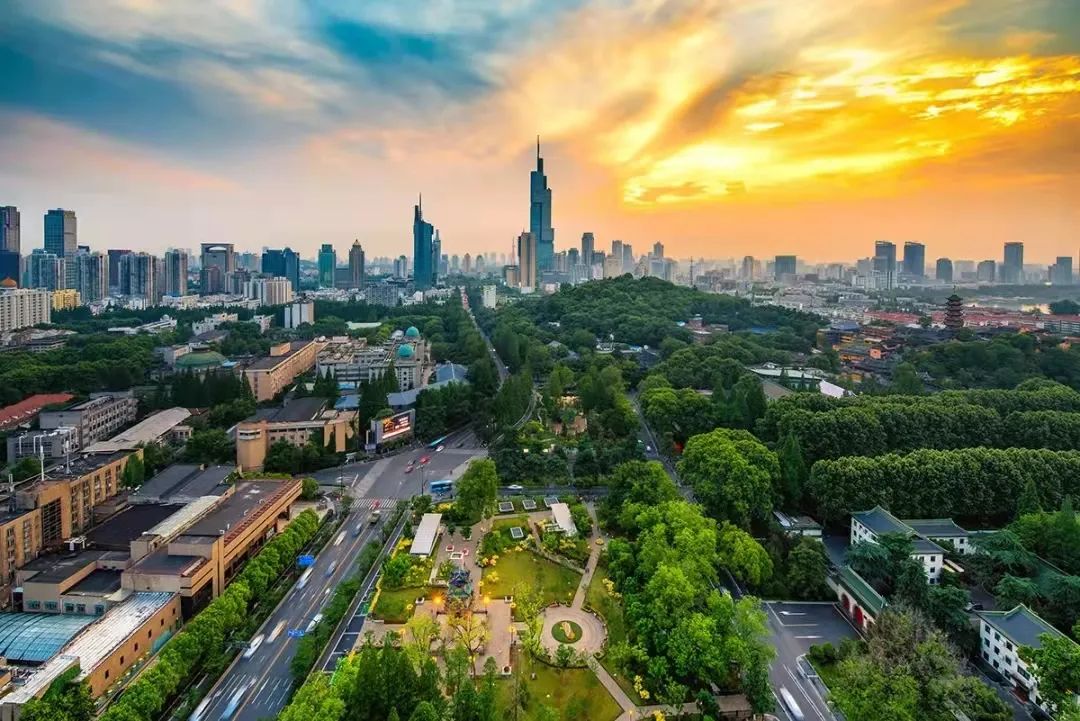
Xuanwu District is the core urban area of Nanjing, with a total area of 75.46 square kilometers, consisting of 7 streets and 60 communities. As of 2023, the total resident population is 536900. It is the location of the Nanjing Municipal Party Committee, Municipal Government, and numerous provincial and municipal government agencies. The mountains, waters, cities, and forests within the jurisdiction are beautiful, with Purple Mountain and Xuanwu Lake accounting for nearly 50% of the total area. The historical heritage is profound, with many imperial palaces and gardens built here during the ten dynasties. Historical and cultural relics such as the Ming Xiaoling Mausoleum and the Zhongshan Mausoleum are well-known both domestically and internationally. There are abundant scientific and educational resources in the area, including higher education institutions such as Southeast University, Nanjing University of Science and Technology, Nanjing Agricultural University, as well as research institutes such as the Nanjing Branch of the Chinese Academy of Sciences and the Provincial Academy of Agricultural Sciences. Nearly one-third of the academicians of the "two academies" in the province and about half of the key laboratories at or above the provincial level in the city are concentrated. The transportation is well-developed and convenient, with a network of buses and subways interwoven. Nanjing Railway Station and Bus Terminal are connected as one, and the Shanghai Nanjing Expressway and Nanjing Hangzhou Expressway drive into the city.
Qinhuai District
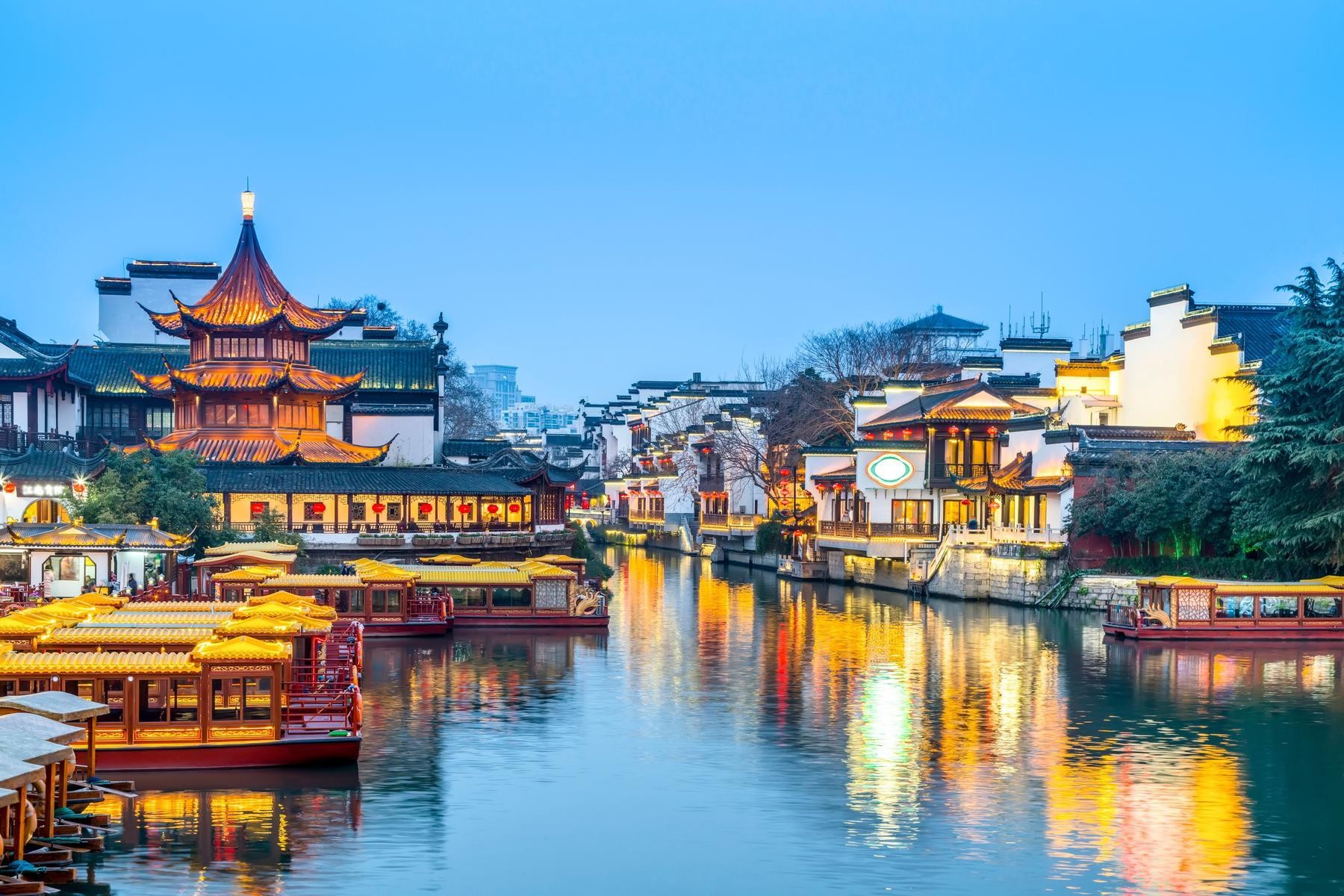
Qinhuai District is located in the southeast of the main city of Nanjing, named after the ten mile Qinhuai River that runs through the entire area. It is one of the four main urban areas of Nanjing, with a total area of 49.11 square kilometers. It governs 12 streets including Wulao Village, Hongwu Road, Daguang Road, Ruijin Road, Yueya Lake, Guanghua Road, Chaotian Palace, Honghua, Fuzimiao, Shuangtang, Zhonghua Gate, and Qinhong, 104 communities, and 1 provincial-level development zone - Baixia High tech Industrial Park. The natural and artificial rivers in the area are scattered, including the Qinhuai River, Qingxi River, Yudai River, Xiangshui River, Yunliang River, and Xiaoyun Canal. There is the famous AAAAA scenic area of Confucius Temple Qinhuai Scenic Belt both domestically and internationally. There are garden attractions such as Zhanyuan, Bailuzhou Park, Shen Wansan's former residence, Zhonghuamen Castle, and nearly ten leisure squares such as Dongshuiguan, Donggan Binhe Park, and Shuiximen.
Jianye District

Jianye District is located in the southwest of the main city of Nanjing, with the Qinhuai River to the east, the Yangtze River to the west, the Qinhuai New River to the south, and Hanzhongmen Street to the north. The administrative area is 81.75 square kilometers, and the land area (excluding water areas) is 58.29 square kilometers. It currently governs 6 streets (offices) and 64 communities, with a permanent population of approximately 458900 and a total population of 888300. There is Mochou Lake, known as the top of the "48 Scenic Spots of Jinling" in the region, as well as the national craft treasure of China's "Three Famous Brocade" - Chinese Cloud Brocade. There are also historical and cultural resources such as the Nanjing Olympic Sports Center, Jiangsu Grand Theater, Green Expo Park, and the Memorial Hall for the Victims of the Nanjing Massacre by the Japanese Invaders. As one of the central urban areas of Nanjing, Jianye is an ancient yet young city district. In 212 AD, Sun Quan of Eastern Wu established the capital of Jianye, and the name Jianye was derived from it. After the district adjustment in Nanjing, Jianye withdrew from the old city and marched towards Hexi, becoming the main body of Nanjing Hexi New City.
Gulou District

Gulou District is located on the south bank of the lower reaches of the Yangtze River and in the northwest of Nanjing city. It is one of the central urban areas of Nanjing and also the location of the Jiangsu Provincial Party Committee, the Standing Committee of the Provincial People's Congress, the Provincial Government, and the Provincial Political Consultative Conference. It has a 12 kilometer golden Yangtze River coastline in the main city of Nanjing. To the east, it is bordered by Central Road, Zhongshan Road, and Yaoshang Village Cross Street, and is adjacent to Xuanwu District and Qixia District respectively; Divided by Hanzhong Road, Hanzhongmen Street, and the western section of Jiqingmen Street (west to Qinghe Road and east to the northern section of Yanshan Road), it borders Qinhuai District and Jianye District respectively; To the west and north, it faces Pukou District with the Yangtze River as its boundary. The area is 54.18 square kilometers. Gulou District is a central urban area surrounded by mountains, lakes and rivers, and integrated with mountains, water, city, and forests. It boasts the dominance of dragons and tigers, as well as the beauty of mountains and waters. The Qinhuai River and the Jinchuan River flow through the territory. Qingliang Mountain, Shizi Mountain and Shofu Mountain are among them. The Ming City Wall is surrounded by mountains. The 11 km golden coastline of the Yangtze River stretches continuously. Gulou Gang and Mount Wutai separate the alluvial plain of the Qinhuai River from the alluvial plain of the Jinchuan River.
Qixia District
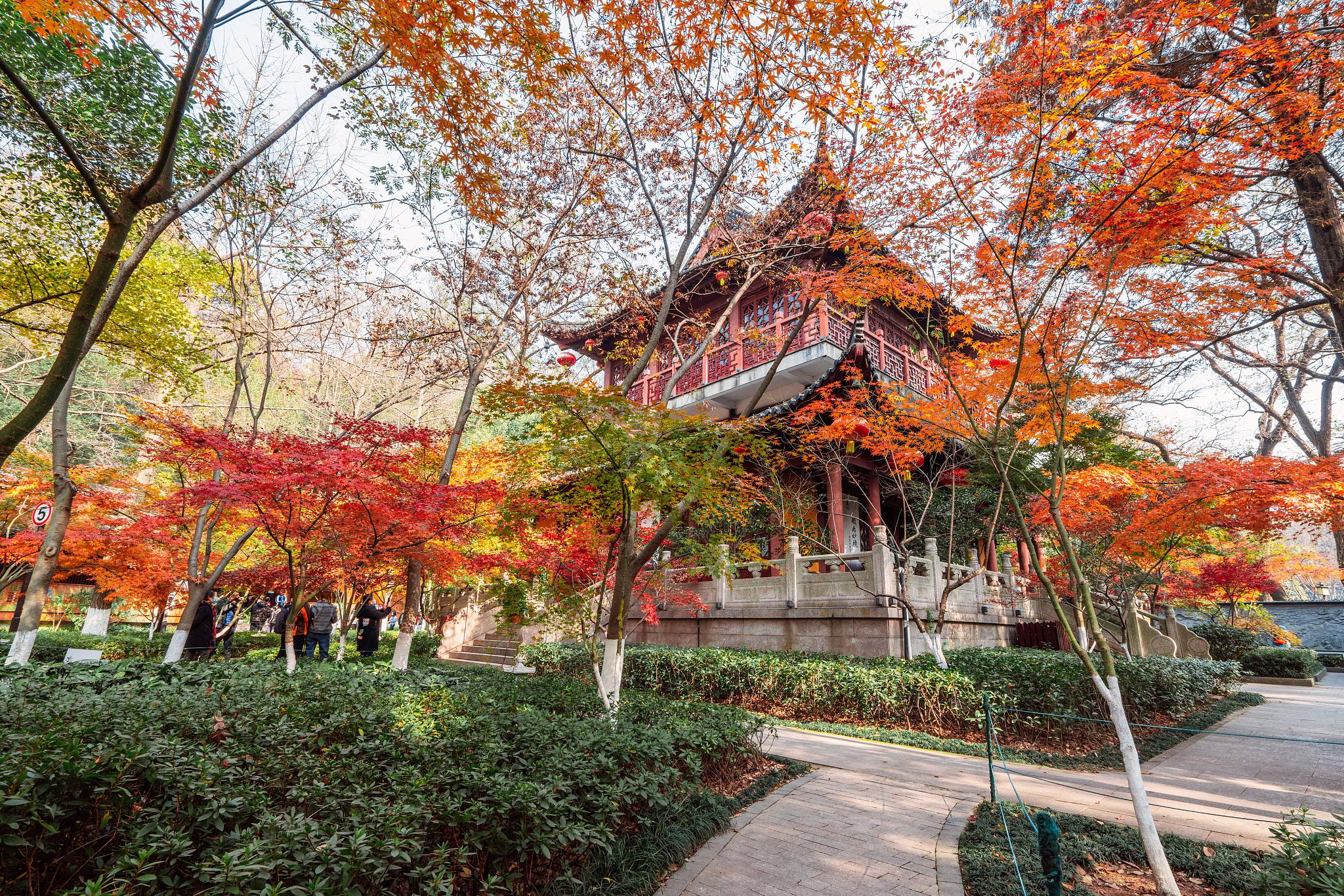
Qixia District is located in the northeast suburbs of Nanjing City, with a total area of 395.44 square kilometers (including the surface of the Yangtze River). It has a long history, a rich cultural heritage, and numerous cultural relics, making it a popular tourist destination. Here, the mountains and rivers are picturesque, with Qixia Mountain shrouded in mist, Yanziji crashing against the shore, and the second and fourth bridges of the Yangtze River in Nanjing, with Changhong lying on the waves; The economy and social undertakings are thriving, the national level development zone Nanjing Economic and Technological Development Zone is developing strongly, and the Xianlin University City (Xianlin New City) in Nanjing is quietly rising; Heroes are everywhere, from Emperor Qin Shi Huang to Emperor Kangxi and Qianlong of the Qing Dynasty, from the scholar Ming Sengshao to the poet Li Bai, from the sea crossing master Jian Zhen to the endless poet Zhao Puchu, from the Prime Minister of the Beiyang Government Yan Huiqing to the national industrialist Yao Xizhou, from the Italian navigator Marco Polo to the people's educator Tao Xingzhi, especially in modern times, revolutionary pioneers such as Sun Yat sen and the founder of the People's Republic of China Mao Zedong, countless influential figures throughout history have stopped and lingered here, guiding the country, reciting poetry to express their emotions, and making achievements. One Qixia Mountain, half of the history of Jinling "has become a common view and consensus in the Nanjing historical community. Qixia District has a unique position and role in the historical development and implementation of the Yangtze River development strategy in Nanjing, which has attracted worldwide attention.
Yuhuatai District

Yuhuatai District is located in the southern part of Nanjing, the ancient capital of the Six Dynasties, on the banks of the Yangtze River. It borders Qinhuai District and Jiangning District to the east, Jiangning District to the south, Pukou District across the Yangtze River to the west, and Qinhuai District and Jianye District to the north. The district covers an area of 132.39 square kilometers and currently has 7 streets, 1 Yuhua Economic Development Zone, 66 communities, and a permanent population of 623500. Yuhuatai District is the core area of Nanjing's construction of a Chinese software city, an important national center for software and information industries, the largest research and development base for the communication software industry in China, and the second batch of "mass entrepreneurship and innovation demonstration bases" in the country. Successfully established the National Modern Communication Software Industry Base, National Digital Publishing Base, National Science and Technology Enterprise Incubator, China Service Outsourcing Base Urban Demonstration Zone, National Service Industry Standardization Pilot Zone, and was awarded titles such as "National Advanced Zone for Science and Technology Progress".
Jiangning District

Jiangning District is located on the south bank of the lower reaches of the Yangtze River, at the junction of Jiangsu and Anhui provinces in southwestern Jiangsu Province. It borders Qixia District and Jurong City to the east, Lishui District to the southeast, Dangtu County and Ma'anshan City in Anhui Province to the south and southwest, and Yuhuatai District and Qinhuai District to the north and northeast, respectively. The geomorphic area of Jiangning District is part of the Ningzhenyang hilly and mountainous region, with a complex structure. The northeastern part is the western section of the Ningzhen Mountain Range, the southwestern part is the northern edge of the Ningwu Fault Basin, the central part is a loess hill with obvious inclination towards the northeast and southwest low mountains and hills, and a Qinhuai River plain formed by the alluvial deposits of the Qinhuai River. The western part is the Binjiang Plain. The terrain is high in the north and south, low in the middle, resembling a "saddle". By the end of 2023, there will be a total of 10 streets, 145 communities, and 71 villages in the entire district. In 2023, Jiangning District achieved a regional GDP of 305.619 billion yuan, an increase of 4.5% compared to the same period last year at comparable prices. The total permanent population of the district is 1.9852 million, an increase of 15300 compared to 2022.
Pukou District
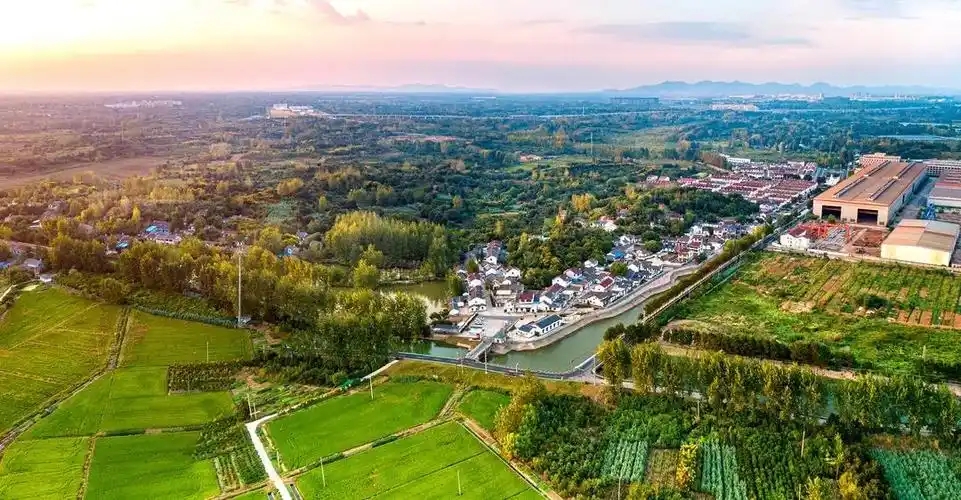
Pukou District is located in the northwest of Nanjing City, on the north bank of the Yangtze River, facing Gulou District, Jianye District, Yuhuatai District, and Jiangning District across the river. It is adjacent to Liuhe District and Lai'an County, Chuzhou City, Quanjiao County, and He County in Anhui Province in the north and west, respectively. Pukou is an important gateway for the integrated development of the Yangtze River Delta, an important part of the national level Jiangbei New Area and Free Trade Zone, and a key "new main city" built by Nanjing. It has unique ecological endowments, profound cultural heritage, a strong industrial foundation, and a historical opportunity for the integrated development of Jiangbei. Pukou has rich and unique ecological resources, with the Yangtze River to the south and the Chuhe River to the north. It is situated in the center of Baili Laoshan and boasts a unique landscape of "a generation of grass saints, ten miles of hot springs, Baili Laoshan, millennium ginkgo trees, ten thousand white egrets, and a 100000 acre national forest park". The forest coverage rate is the highest in the province, and the surface water environment quality ranks among the top in the province. It is one of the first ecological demonstration zones in China, a national demonstration zone for ecological civilization construction, and one of the first "Chinese Hot Spring Hometown" and "Chinese Natural Oxygen Bar" in China. By the end of 2023, Pukou District will have a land area of 715 square kilometers, a permanent population of 414500, 7 streets, and 76 urban and rural communities. The region achieved a gross domestic product of 52.995 billion yuan.
Liuhe District
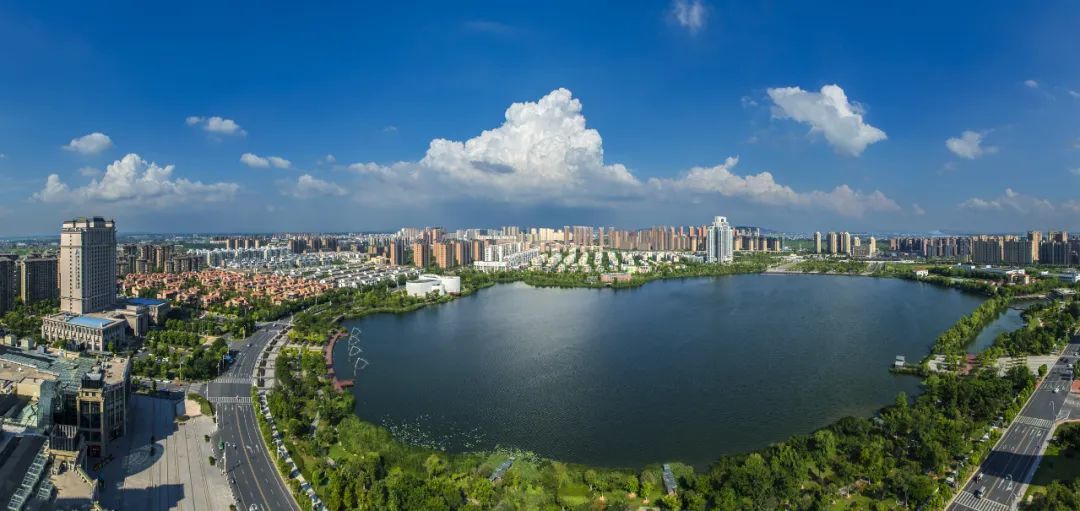
Liuhe District is located in the north of Nanjing City, bordering Yizheng City to the east, Pukou District to the south, facing the main urban area of Nanjing across the Yangtze River, adjacent to Lai'an County in Anhui Province to the west, and adjacent to Tianchang City in Anhui Province to the north. At present, Liuhe District has jurisdiction over 8 streets, 1 town, 58 resident committees, and 47 village committees. According to the statistics of the annual report of public security, the total registered residence population of the district at the end of 2023 will be 679500. Liuhe has excellent ecological environment and is a national ecological zone, with one national geological park and six provincial and municipal forest parks. Zhuzhen Zhimaling Daquan Lake Scenic Area is a reference area for air quality standards in Jiangsu Province. Jinniu Lake is the largest artificial lake in Nanjing and was the venue for the sailing event of the 2014 Nanjing Youth Olympic Games. Liuhe has convenient transportation and is known as the "Jiangbei Transportation City". It has a 16.1-kilometer Yangtze River coastline and multiple high-grade highways such as Ninghuai, Ningtong, and Ningluo intersect within the area. The Ningqi Railway double track and the planned Ninghuai high-speed railway pass through the area. The Ningtian Intercity (S8 line) subway and Jiangbei Avenue expressway seamlessly connect with the main city of Nanjing. Liuhe Airport has been completed and put into use, and there are also long-distance oil and gas pipelines such as Lu Ning, Yichang, West East Gas Transmission, and Sichuan East Gas Transmission, as well as five transportation modes including "water land air rail pipeline". Liuhe has a good industrial foundation and is at the forefront of modern agricultural development in the city. It has six provincial and municipal modern agricultural parks with a strong industrial foundation, making it an important manufacturing base in Nanjing. In addition to the chemical park, it has also formed an industrial development pattern with Liuhe Economic Development Zone as the leader, focusing on new energy, high-end equipment, energy conservation and environmental protection. It has gathered a number of advanced manufacturing enterprises such as Guoxuan Battery, Jiankang New Energy Vehicles, Youbei Electric, and Lide Dongfang.
Lishui District
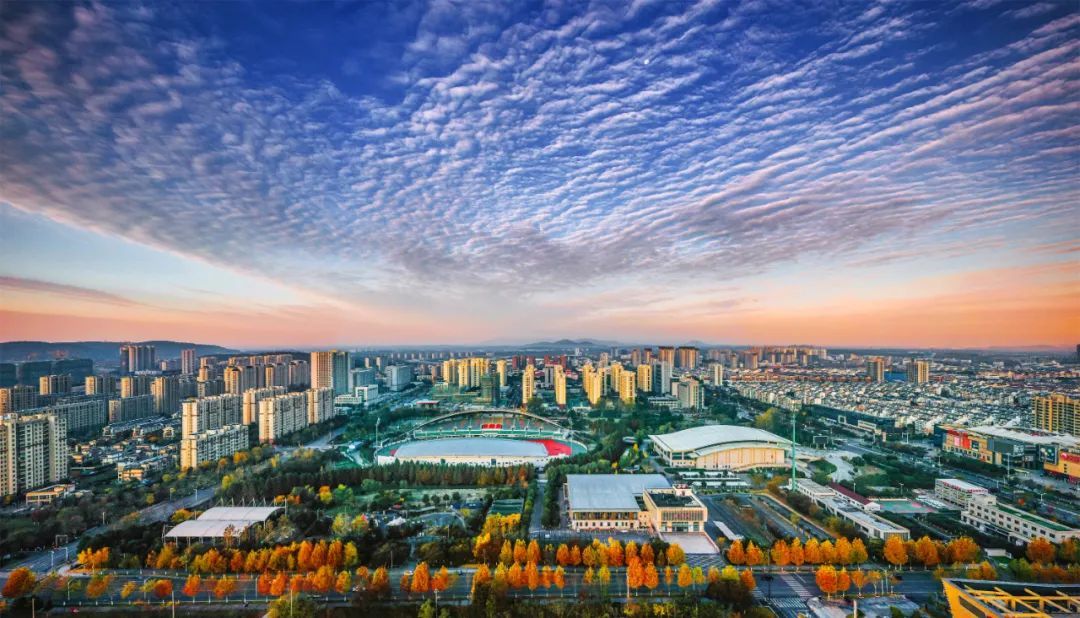
Lishui District is under the jurisdiction of Nanjing City, Jiangsu Province. Located in the central southern part of Nanjing City, with an area of 1067 square kilometers, it governs 3 towns and 5 streets. The transportation within the area is convenient, and it is a three-dimensional hub city that integrates airports, railways, rail transit, highways, and waterways; The ecological environment in the area is good, with a forest coverage rate of 35.88%, air quality reaching the national second level standard, and water quality reaching the national second level standard. It is known as the "natural oxygen bar". Lishui District has been awarded titles such as National Garden City, National Health City, National Ecological Zone, National Ecological Civilization Construction Demonstration Zone, National Comprehensive Strength Top 100 Zone, National Investment Potential Top 100 Zone, National Green Development Top 100 Zone, National Science and Technology Innovation Top 100 Zone, and National New Urbanization Quality Top 100 Zone. Lishui currently has "six major experimental demonstration zones": Jiangsu Nanjing National Agricultural High tech Industry Demonstration Zone, the first batch of national and the only one in the Yangtze River Delta; National Airport Economic Demonstration Zone, with the only airport bonded logistics center in Nanjing (Type B); Healthy Jiangsu Practice Demonstration Zone, the only one in the province; Ninghang Ecological Economic Belt Cooperation Pilot Zone, the first inter provincial cooperation pilot zone in the Ninghang Ecological Economic Belt; National Urban Rural Integration Development Pilot Zone; The only high-quality development pilot zone for manufacturing industry in Nanjing.
Gaochun District

Gaochun District is located at latitude 31 ° 13 '~31 ° 26' N and longitude 118 ° 41 '~119 ° 21' E. It is situated at the southwestern end of Jiangsu Province, at the border of Jiangsu and Anhui provinces, and serves as the southern gateway of Nanjing City. It borders Liyang City to the east, Langxi County, Xuanzhou District, and Dangtu County in Anhui Province to the southeast, south, and west, and Lishui District to the north. 50 kilometers north of Nanjing Lukou International Airport, within the 1-hour metropolitan area of Nanjing; Li (Yang) - Wu (Hu) Expressway (Gaochun - Wuhu section has been completed, but Liyang - Gaochun section has not yet been completed) and Wu (Wuhu) - Tai (the Taihu Lake) Highway cross the east and west, reaching Suzhou, Wuxi, Changhu in the east and Wuhu in the west. The Ning (Nanjing) Gao (Gaochun) Expressway and Gao (Gaochun) Xuan (Xuanzhou) Road connect and run through the north and south, reaching Xuanzhou Lang (Xi) Guang (De) in the south and Nanjing in the north; The Ninggao Expressway and Ninggao Intercity Rail Transit cross Shijiuhu and directly connect to Nanjing. Gaochun District is located at the southwestern end of Jiangsu Province, adjacent to Liyang and Lishui in the east and north respectively, and bordered by Dangtu, Xuanzhou, and Langxi in Anhui Province in the southwest. The total area of the district is 790.23 square kilometers. The whole district has 6 streets including Chunxi, Gubai, Qiqiao, Gucheng, Dongba, and Yaxi, as well as 2 towns including Brick Wall and Yangjiang, with a total of 100 administrative villages. Gaochun has abundant tourism resources, including China's first international slow city - Yaxi Ecological Tour (provincial-level tourism resort), one national forest park - Youzishan National Forest Park (China's most promising forest tourism scenic spot), three national 4A level tourist attractions - Gaochun Old Street Chinese Historical and Cultural Famous Street, Yaxi International Slow City, Youzishan Leisure Tourism Zone, one national leisure agriculture and rural tourism demonstration site - Yinlin Ecological Park, a national cultural industry demonstration base, provincial-level industrial tourism zone, Chinese time-honored brand, provincial-level intangible cultural heritage workshop - Gaochun Ceramics, a national rural tourism key village - Santiaolong Rural Slow Village, a provincial-level rural tourism key village, and one of the first batch of employee recuperation bases in Nanjing City - Stonewall walled boutique homestay village; The second batch of employee recuperation bases in Nanjing - Lvjia Tianyuan Station; National 5C level self driving RV campsite - Half City ▪ Dashan RV Campsite, National Grade A Homestay - Lanyuan Inn, Provincial Red Tourism Integration Development Demonstration Project - Xishe, Original Provincial Five Star Rural Tourism Area - Slow Enjoyment Mountain, Provincial Four Star Rural Tourism Area - Wujiazui Tropical Customs Valley, "China's Most Beautiful Tea Garden" - Chunqing Tea Garden.

















 京公网安备
京公网安备